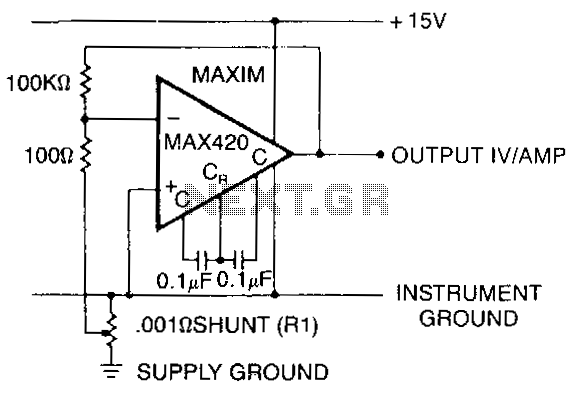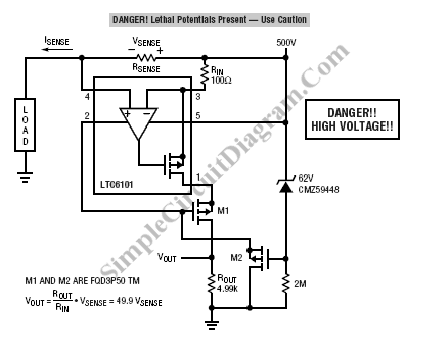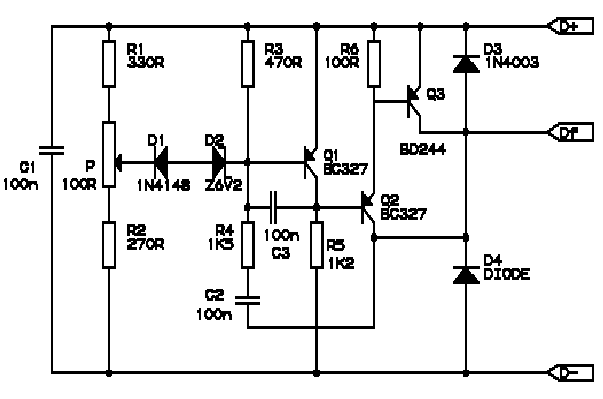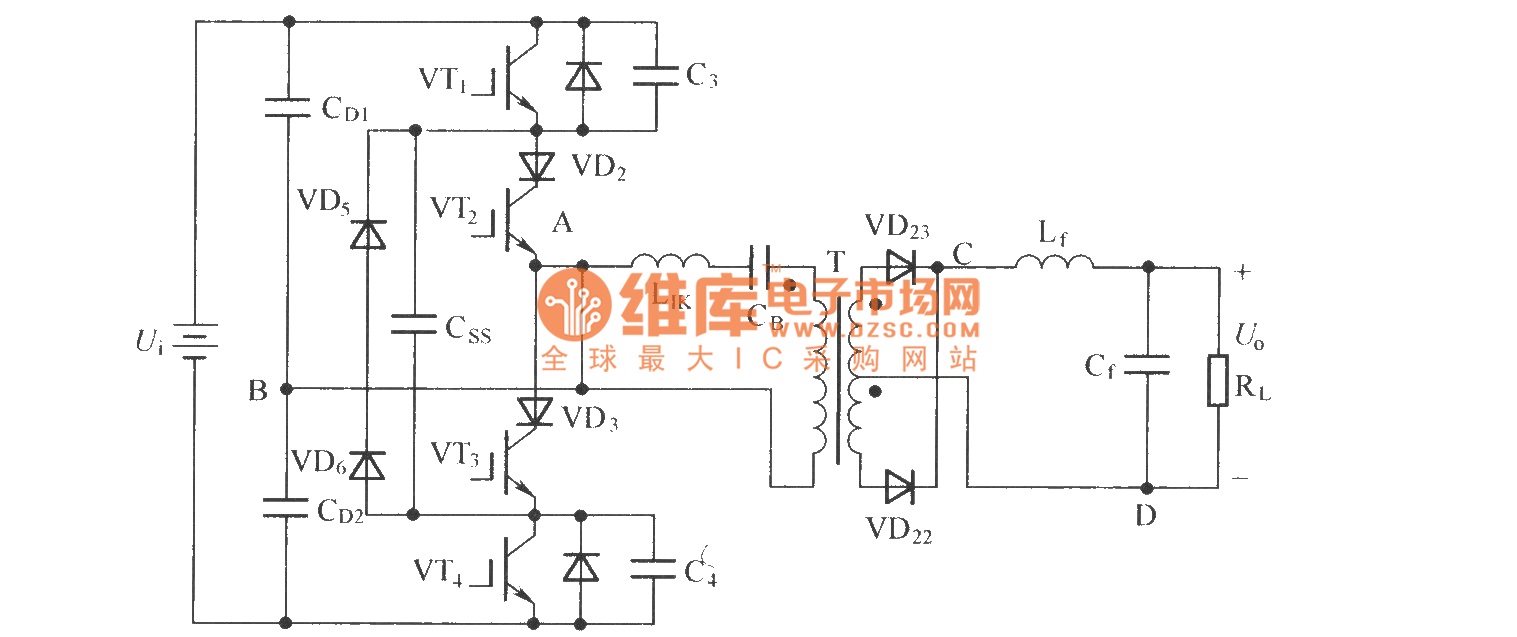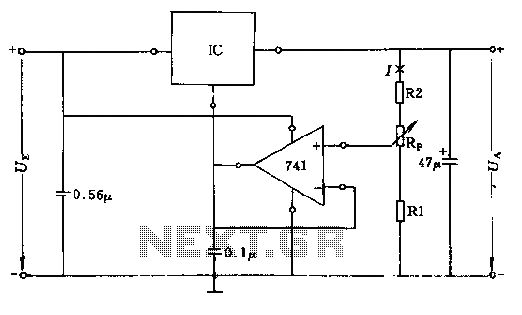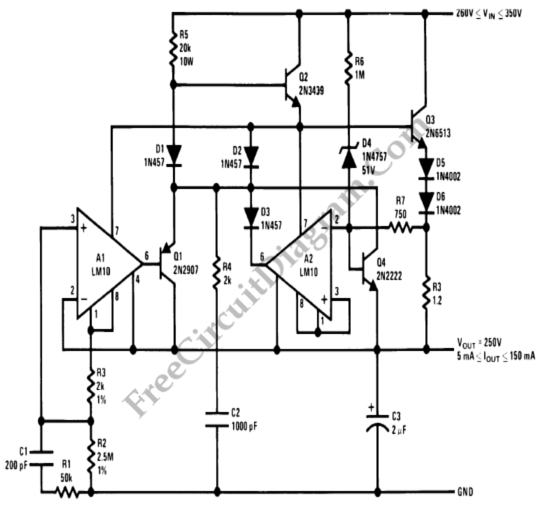
HV regulator with foldback current limiting
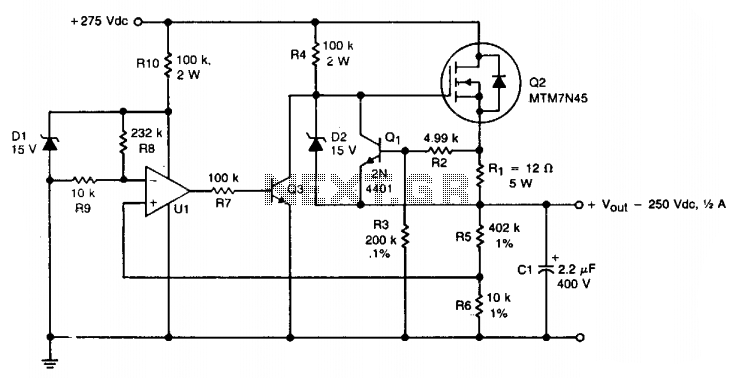
A TMOS MTM7N45 (Q2) is utilized as a series pass element in a linear high voltage supply that accepts +275 V unregulated and produces 250 V regulated with foldback current limiting. A 15 V zener diode (D1) provides the DC reference for operational amplifier (U1), whose other input is derived from a fraction of the output voltage. U1 drives Q3, which in turn drives the gate of Q2. Foldback current limiting is achieved through resistors R1, R2, R3, R4, transistor Q1, and diode D2.
The circuit employs a TMOS MTM7N45 transistor (Q2) as the primary pass element, facilitating the conversion of an unregulated input voltage of +275 V to a regulated output of 250 V. The operational amplifier (U1) plays a critical role in maintaining voltage regulation. It compares a reference voltage, provided by a 15 V zener diode (D1), with a scaled version of the output voltage. This feedback mechanism ensures that the output voltage remains stable under varying load conditions.
The gate of the TMOS transistor (Q2) is controlled by transistor Q3, which acts as a buffer and driver. The operational amplifier's output is used to modulate the gate voltage of Q2, allowing for precise control over the pass element's conduction state. This configuration is essential for achieving the desired output voltage while protecting the circuit from overcurrent conditions.
Foldback current limiting is implemented to prevent excessive current draw during overload conditions. This is achieved through a combination of resistors (R1, R2, R3, R4), which form a voltage divider network, and Q1, which serves as a current sensing element. When the output current exceeds a predetermined threshold, the voltage across these resistors triggers Q1 to turn on, reducing the gate voltage of Q2 and thereby limiting the output current. Diode D2 assists in this process by providing a path for the feedback signal, ensuring that the foldback mechanism operates effectively.
Overall, this linear high voltage supply design is characterized by its ability to deliver a stable output voltage while incorporating essential safety features such as foldback current limiting, thus enhancing the reliability and performance of the circuit in high-voltage applications.A TMOS MTM7N45 (Q2) is used as a series pass element in a linear high voltage supply that accepts +275-V unregulated and produces 250 V regulated with foldback current limiting. A 15-V zener, Dlf provides the dc reference for operational amplifier Ul, whose other input is obtained from a fraction of the output voltage.
Ul drives Q3, which drives the gate of Q2. Foldback current limiting is achieved by Rl, R2, R3, R4, Ql, and D2.
The circuit employs a TMOS MTM7N45 transistor (Q2) as the primary pass element, facilitating the conversion of an unregulated input voltage of +275 V to a regulated output of 250 V. The operational amplifier (U1) plays a critical role in maintaining voltage regulation. It compares a reference voltage, provided by a 15 V zener diode (D1), with a scaled version of the output voltage. This feedback mechanism ensures that the output voltage remains stable under varying load conditions.
The gate of the TMOS transistor (Q2) is controlled by transistor Q3, which acts as a buffer and driver. The operational amplifier's output is used to modulate the gate voltage of Q2, allowing for precise control over the pass element's conduction state. This configuration is essential for achieving the desired output voltage while protecting the circuit from overcurrent conditions.
Foldback current limiting is implemented to prevent excessive current draw during overload conditions. This is achieved through a combination of resistors (R1, R2, R3, R4), which form a voltage divider network, and Q1, which serves as a current sensing element. When the output current exceeds a predetermined threshold, the voltage across these resistors triggers Q1 to turn on, reducing the gate voltage of Q2 and thereby limiting the output current. Diode D2 assists in this process by providing a path for the feedback signal, ensuring that the foldback mechanism operates effectively.
Overall, this linear high voltage supply design is characterized by its ability to deliver a stable output voltage while incorporating essential safety features such as foldback current limiting, thus enhancing the reliability and performance of the circuit in high-voltage applications.A TMOS MTM7N45 (Q2) is used as a series pass element in a linear high voltage supply that accepts +275-V unregulated and produces 250 V regulated with foldback current limiting. A 15-V zener, Dlf provides the dc reference for operational amplifier Ul, whose other input is obtained from a fraction of the output voltage.
Ul drives Q3, which drives the gate of Q2. Foldback current limiting is achieved by Rl, R2, R3, R4, Ql, and D2.
